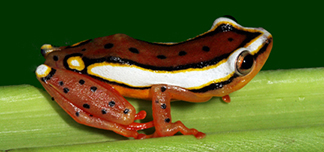| Publication Type: | Journal Article |
| Year of Publication: | 1996 |
| Authors: | G. M. Hewitt |
| Journal: | Biological Journal of the Linnean Society |
| Volume: | 58 |
| Pagination: | 247-276 |
| Abstract: | The genetic effects of pleistocene ice ages are approached by deduction from paleoenvironmental information, by induction from the genetic structure of populations and species, and by their combination to infer likely consequences. (1) Recent palaeoclimatic information indicate rapid global reversals and changes in ranges of species which would involve elimination with spreading from the edge. Leading edge colonization during a rapid expansion would be leptokurtic and lead to homozygosity and spatial assortment of genomes. In Europe and North America, ice age contractions were into southern refugia, which would promote genome reorganization. (2) The present day genetic structure of species shows frequent geographic subdivision, with parapatric genomes, hybrid zones and suture zones. A survey of recent DNA phylogeographic information supports and extends earlier work. (3) The grasshopper Chorthippus parallelus is used to illustrate such data and processes. Its range in Europe is divided on DNA sequences into five parapatric races, with southern genomes showing greater haplotype diversity - probably due to southern mountain blocks acting as refugia and northern expansion reducing diversity. (4) Comparison with other recent studies shows a concordance of such phylogeographic data over pleistocene time scales. (5) The role that ice age range changes may have played in changing adaptations is explored, including the limits of range, rapid change in new invasions and refugial differentiation in a variety of organisms. (6) The effects of these events in causing divergence and speciation are explored using Chorthippus as a paradigm. Repeated contraction and expansion would accumulate genome differences and adaptations, protected from mixing by hybrid zones, and such a composite mode of speciation could apply to many organisms. |
| URL: | file://localhost/Users/breda/Desktop/Documents/Literature/H/Hewitt1996.pdf |
